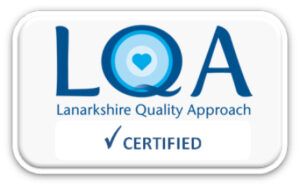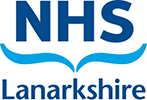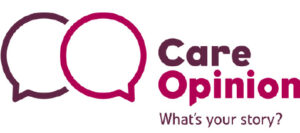New guidelines for A B C Baby Resuscitation (2021)
Information for patients
NHS Lanarkshire Maternity Department
PIL.ABCRRES.53780.W
This information is designed to accompany the practical training session and provides new parents with guidelines to follow in the event of discovering a baby/young child unresponsive or choking. This information follows the current guidelines endorsed by the European Resuscitation Council and UK Resuscitation Council (2021).
A is for Assessment and Airway
As you approach the infant, make sure there are no obvious dangers to yourself.
Stimulate the infant by stabilising their head with a hand on the forehead and tugging their hair and shout ‘wake up’.
If you cannot wake the infant shout for …..
HELP!!!
If more than one rescuer is present get them to call 999 preferably using a mobile phone and put it on loud speaker.
If the infant is unresponsive their AIRWAY must be opened immediately to prevent starvation of air.
- Place the infant on their back on a firm surface such as a table or the floor if necessary.
- Look in their mouth for any obvious foreign bodies that you can remove but don’t blindly insert your fingers into their mouth as you may push a foreign body further in. If you think there is a foreign body use the CHOKING MANOEUVRES described further on.
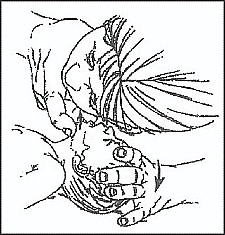
3. Tilt their head back slightly by putting one of your hands on their forehead and using the other to lift up their chin, be careful not to press on their neck while doing this. In infants the head should be placed in a neutral position, a practical way to achieve this is to tilt the head until the face is parallel with the flat surface under the infant. For older children (over 1 year) use more head tilt/chin lift to achieve a ‘sniffing’ position.
B is for Breathing
With the airway open…
LOOK along the infant’s chest and abdomen for evidence of breathing
LISTEN for breathing noises from the infant’s mouth
FEEL for their breath on your cheek
FOR NO MORE THAN 10 SECONDS
At the same time look for signs of life such as movement, coughing or normal breathing”. After “dial 999”, add put mobile phone on loud speaker.
If the infant is breathing normally, keep the airway open to maintain patency and carry the infant to the telephone to dial 999.
Above all closely observe the breathing to make sure it doesn’t stop without you noticing.
If the infant is not breathing normally, YOU must breathe for them…
- Take a breath and seal your mouth around infant’s nose and mouth then blow slowly over approximately 1 second.
- At the same time watch for the chest rising the corner of your eye.
- Remove your mouth and allow the chest to fall.
- Repeat this breathing procedure 5 times in total.
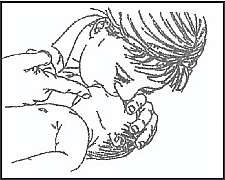
C is for Circulation
Take no more than 10 seconds to: look for signs of life, limbs moving, swallowing, coughing, normal breathing or any kind of verbal noise.
If after 5 rescue breaths there are no signs of life or if you are unsure, start chest compressions.
- Ideally place the infant on a flat surface.
- Expose the infant’s chest and place two fingers on the lower half of sternum/breast bone, one finger breadth above the end of the breast bone.
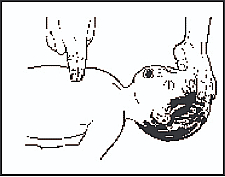
3. Press down on the chest so it depresses 4cm (at least ONE THIRD of the chest depth).
4. Don’t be afraid to press hard and fast.
5. Perform 30 compressions – rate: 100 – 120 compressions minute (about 2 compressions each second).
6. After 30 compressions give the infant two breaths.
If medical help is on the way continue until its arrival, if help has not been called give breaths and chest compressions for ONE MINUTE then TAKE the infant to the phone and dial 999. Alert the ambulance service and continue CPR. Only stop when the infant begins to show adequate signs of life.
Choking manoeuvres (for infants)
If you think the infant is choking, these measures can be used to relieve the obstruction by generating an artificial cough.
Assess Cough – Effective
- crying – speaking*
- loud cough*
- able to breathe before coughing*
- fully alert*
*support infants own attempts to cough
Assess Cough – Ineffective
- unable to provide voice/cry
- quiet/silent cough
- unable to breathe/struggling for breath
- going blue
- becoming unresponsive → ACT QUICKLY. SHOUT FOR HELP!
Back Blows
- Support the infant’s head, hold the infant so face is lower than the body.
- Support the body on your forearm and/or thigh and give the infant up to FIVE firm blows between the shoulder blades, using the heel of your hand.
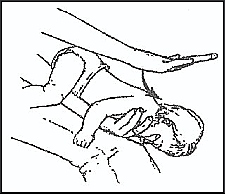
Chest Thrusts
- Turn the infant over and perform up to FIVE chest thrusts in the same position/manner as chest compressions but slightly slower and sharper.
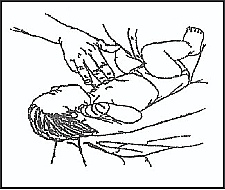
Continue alternating back blows and chest thrusts until airway clears or infant becomes unconscious.
Check the mouth to see if you can see the obstruction. If an object is seen attempt to remove it with one single finger sweep.
If infant becomes unresponsive CALL 999. OPEN THEIR AIRWAY if not breathing normally. Start CPR. Give 5 rescue breaths, 30 chest compressions, continue with 30 chest compressions followed by 2 rescue breaths until the infant revives or help arrives.
Paediatric foreign body airway obstruction treatment
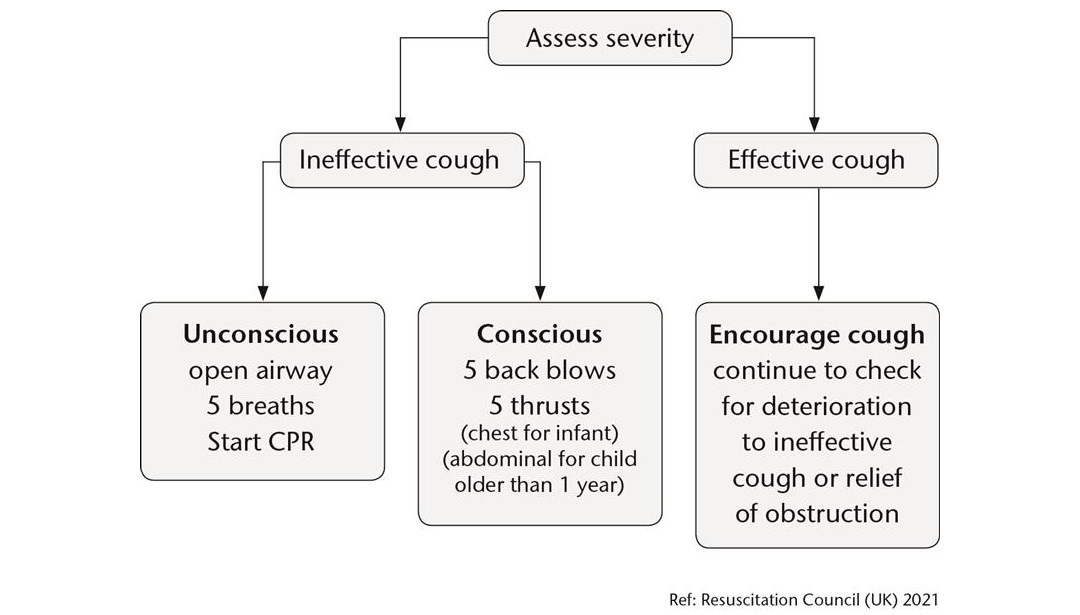
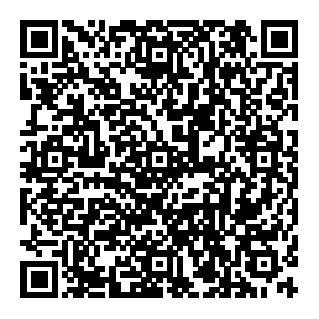
Pub. date: July 2021
Review date: July 2023
Issue No: 08
Reference: PIL.ABCRRES.53780.W
If you need this information in another language or format, please e-mail:
